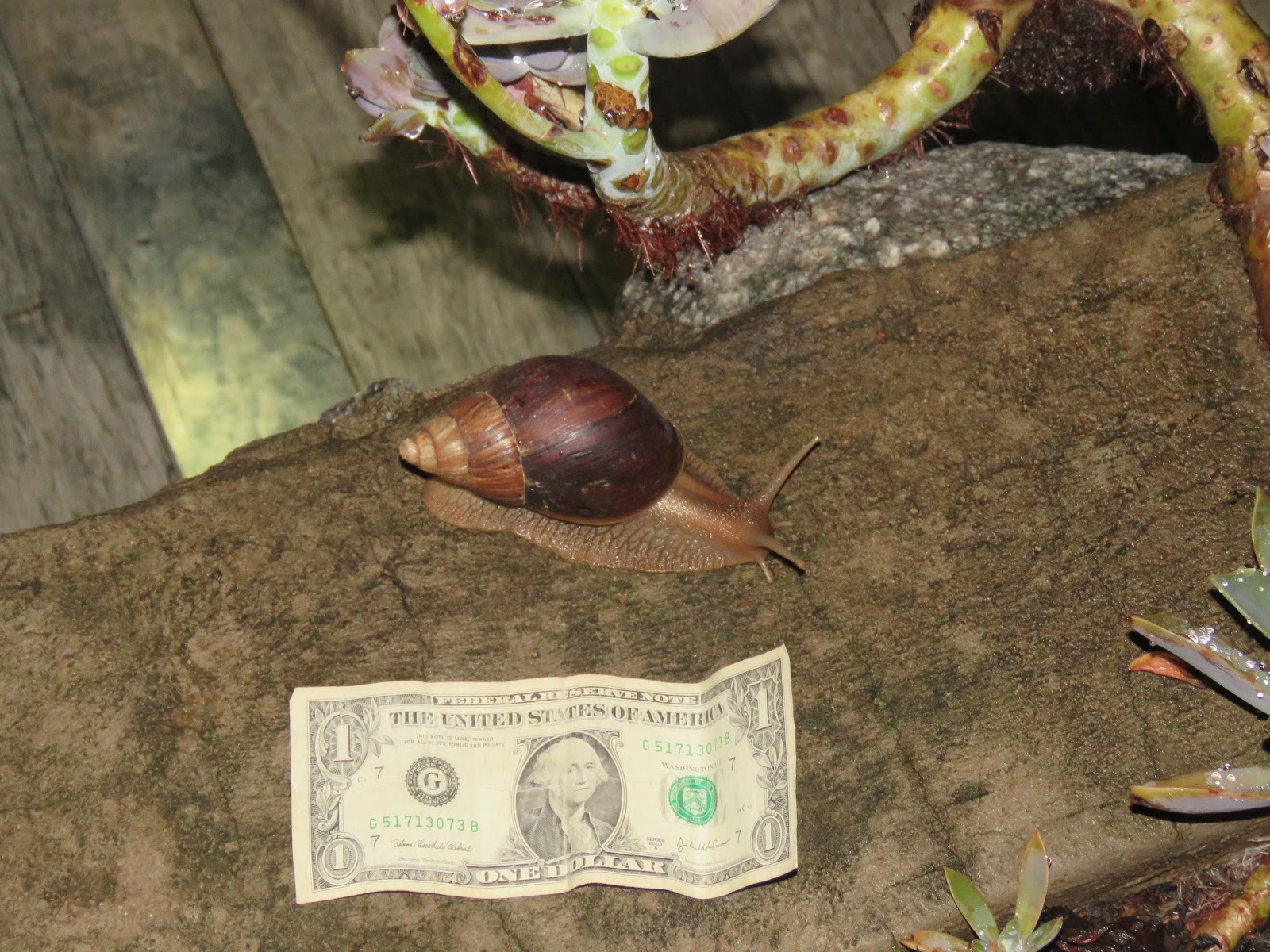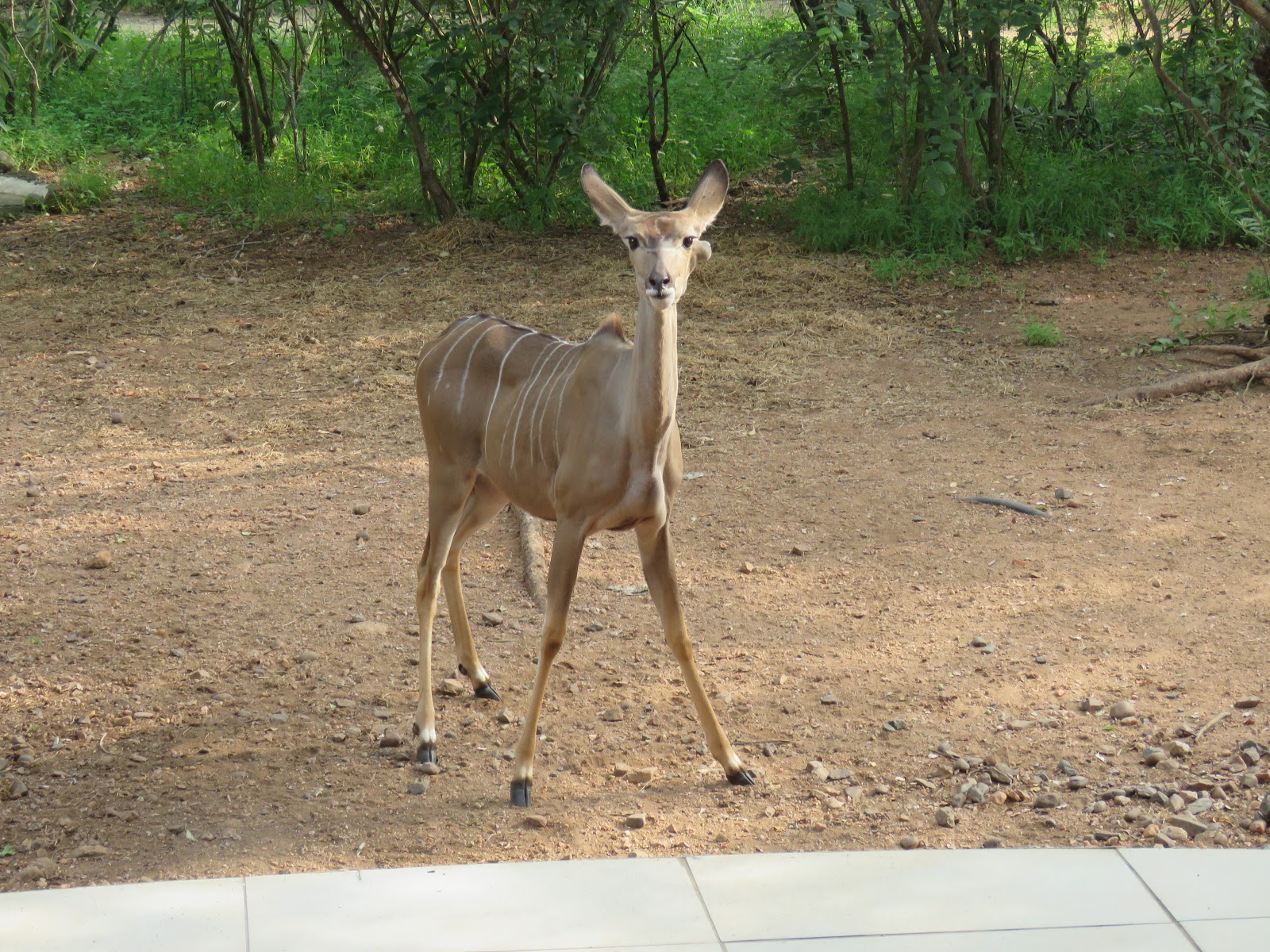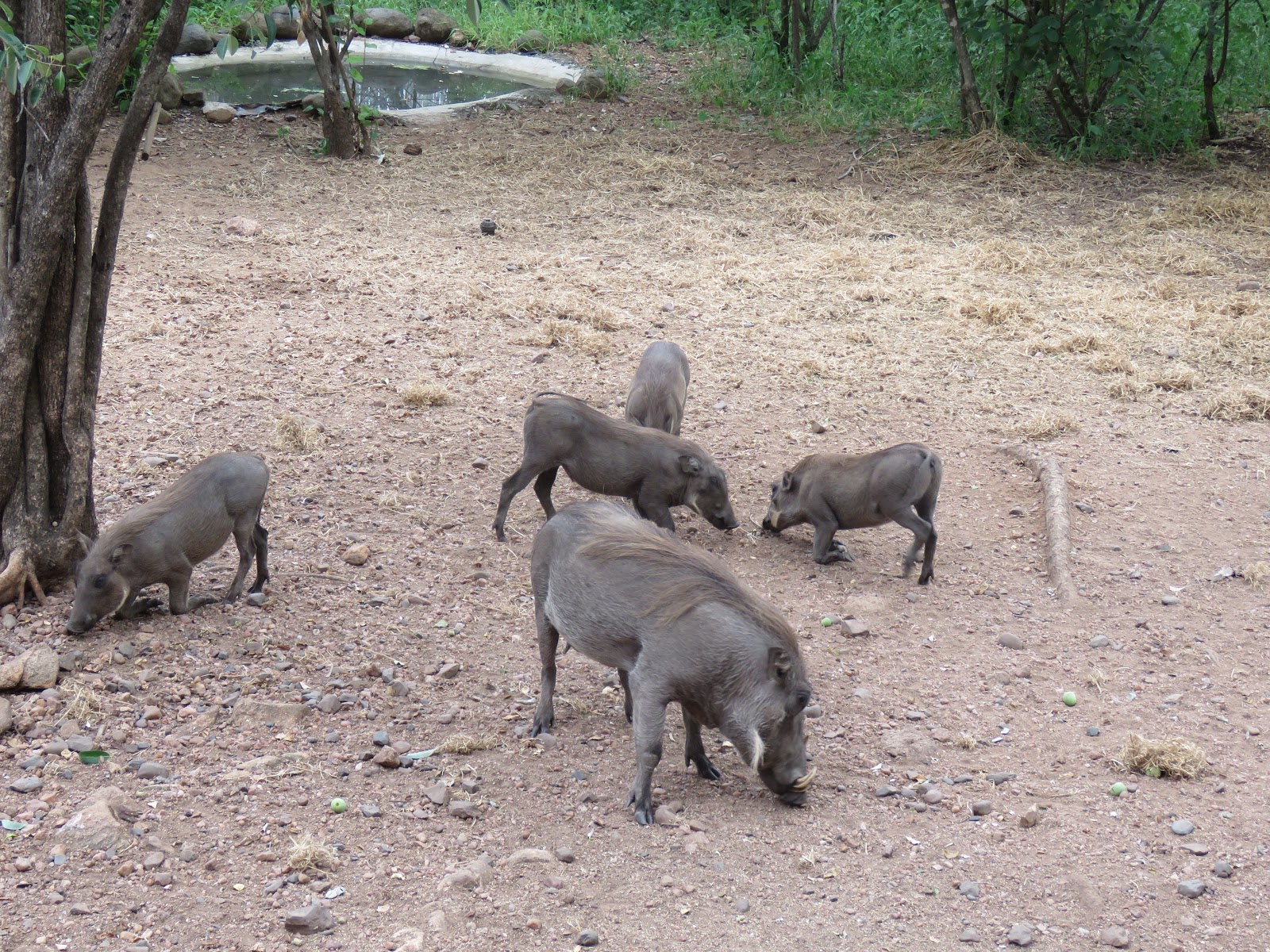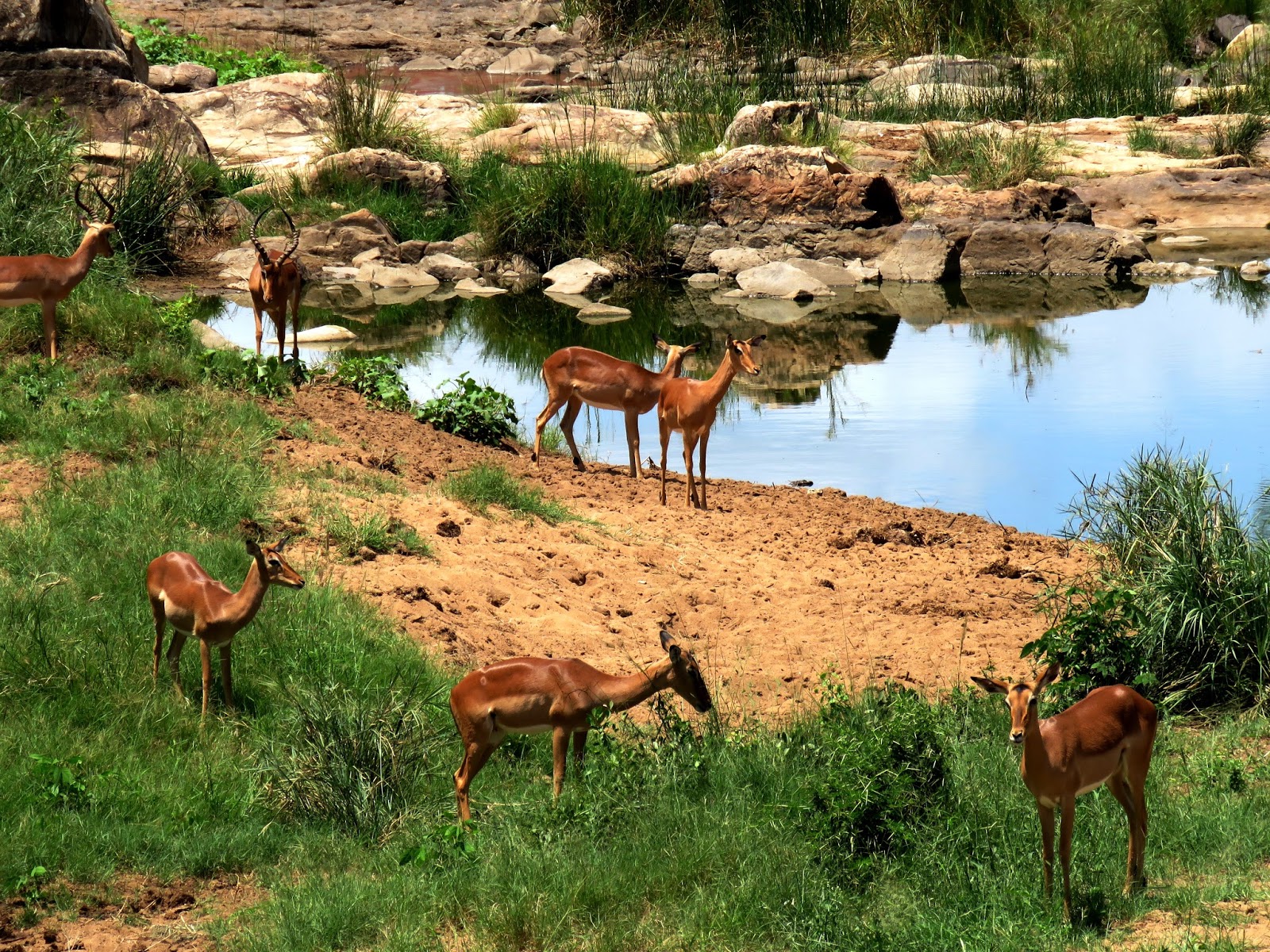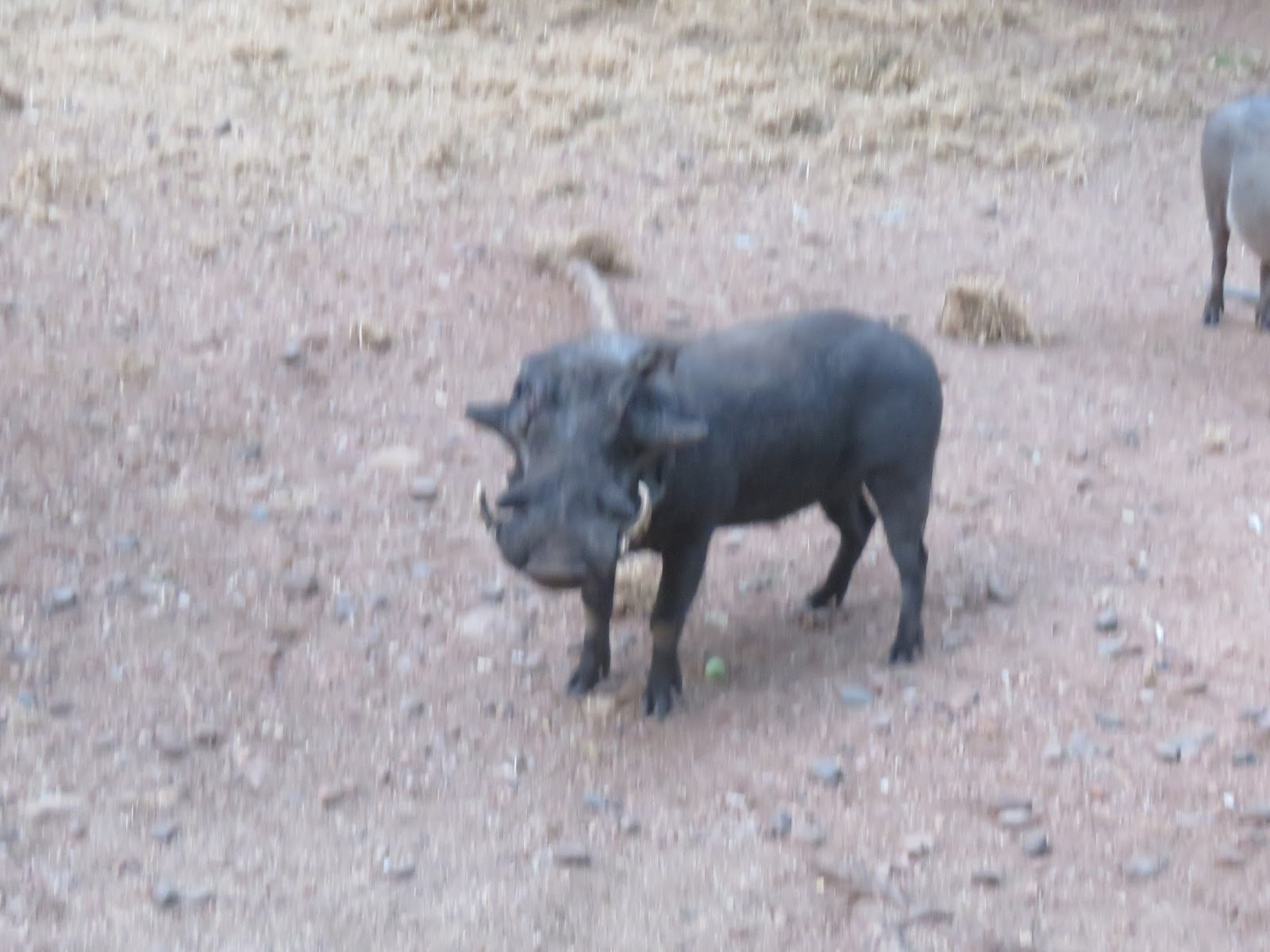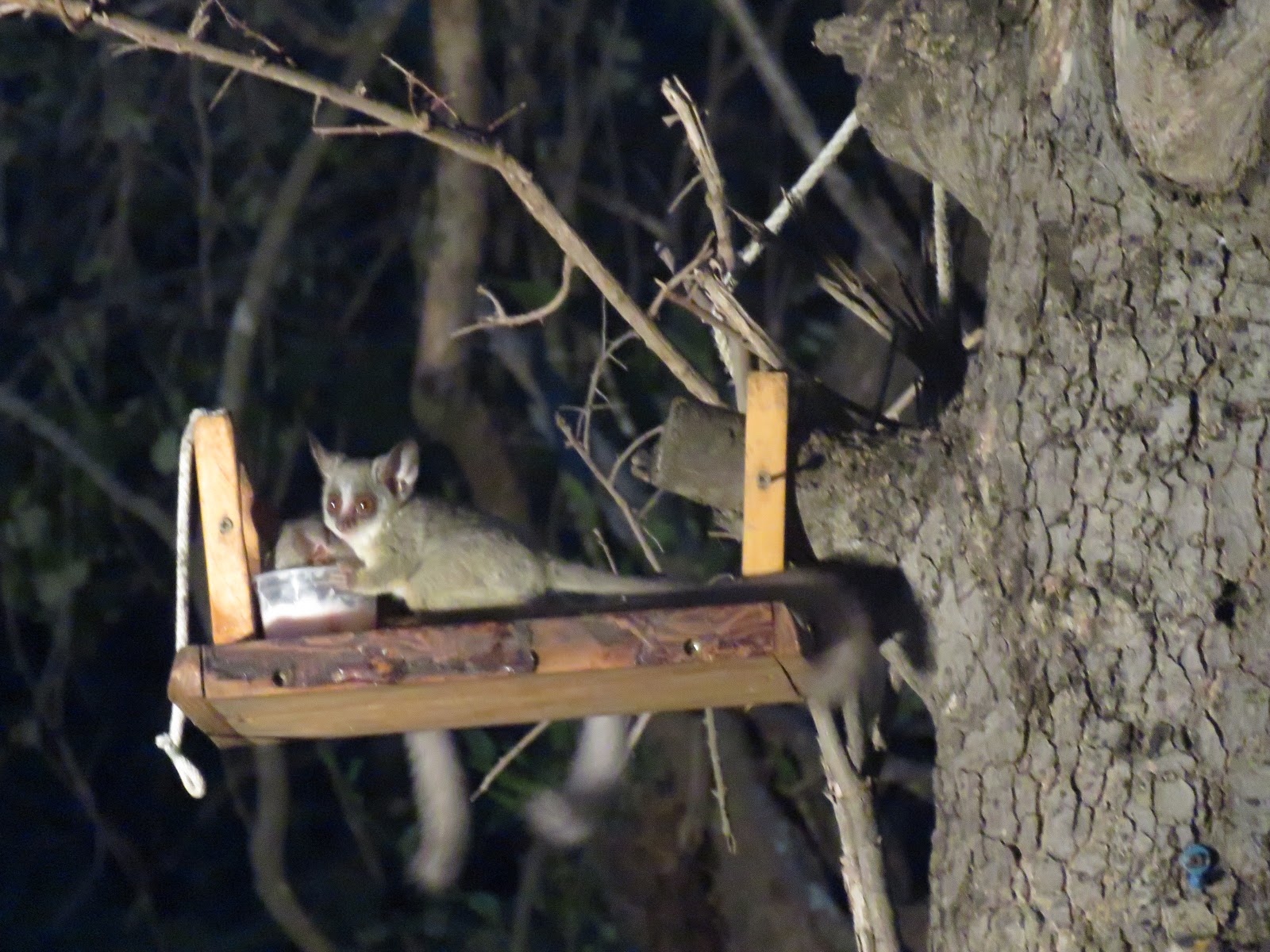 |
| Tom called me outside to see the tiniest baby kudu we’ve seen to date. |
“Sighting of the Day in the Bush”
 |
| This adorable young kudu, most likely born in the past 24 hours, was waiting for an excellent opportunity to suckle, noticing mom was preoccupied with the pellets. |
Ironically, the first thing I did for myself during this long recovery period was to bake a pie, my favorite low-carb cheese pie, to be exact. Losing so much weight since we returned from the hospital nine days ago, from surgery 20 days ago, I knew I needed something sweet to help me stop losing weight.
I will make every effort to be fit and healthy during the recovery period and for years to come after that. Vanity aside, I don’t want to look worn and haggard as he did months after the surgery.
 |
| With the umbilical cord still evident, they most likely were born in the past day or so. |
On top of that, he suffered from severe cognitive dysfunction, as specified in this article. I may not feel great yet and still experiencing a fair amount of pain and discomfort, but my mind is as sharp as ever, if not more so, from increased blood flow to my brain.
From the article mentioned above posted by one of the world’s top cardiologists, John McDougall, the following is stated:
“In 2001, an article in the New England Journal of Medicine reported that 5-years after bypass surgery, 42% of patients showed a decline in mental function of approximately 20 percent or more. A study published this year (2008) in the Annals of Thoracic Surgery using MRI testing after bypass surgery found brain damage in 51% of patients. Three years after their time on the bypass pump, a significant permanent reduction in mental capacity was identified in 31% of patients. I am not talking major stroke here, but these patients can’t remember names or numbers as they once did, experience sleep disturbances (including nightmares), suffer mood swings and lose intellectual acuity. Approximately 30 percent of people suffer persistent depression, and some even contemplate suicide.”
 |
| This was quite a sighting for both of us. |
Wow! It’s a good thing I didn’t see this article before I agreed to the surgery! Not only do I remember almost everything that transpired in the ICU unit and later the hospital ward, but I also remember the most minute details of trips we’d planned well into the future and trips we relished in the past.
I am so grateful for this, and if I have to continue to experience some pain and unease over the next many months, so be it…a small price to pay for one’s retained mental acuity.
Thus, this morning with the scale showing another loss of a kilo (2.2 pounds), I knew I had to up the ante on my caloric consumption while remaining my regular way of eating. Both cardiac physicians explained I didn’t develop three 100% blocked arteries from my diet, instead clearly stating it resulted from my heredity—no need for a dietary change.
After all, my typical meal includes a reasonable portion of lean protein, two types of colorful vegetables, and a salad. What way of eating could dispute the quality of this way of eating?
By making this favorite pie (since my childhood), I can afford myself an extra 350 calories with each slice with less than five grams of carbohydrates. Plus, it’s a feel-good pie making me smile at every delectable bite.
 |
| Too cute for words. |
As much as the value (to me) of enjoying a piece of this pie over the next several nights, I wanted to see if I could make the pie in my weakened condition. Everything I read about recovery from this surgery mentions getting back into a routine of performing tasks I’d done in the past without any strain on my body.
Right now, I’m walking 30 minutes a day, sitting up for the better part of the day, able to shower and take care of personal needs, and do my breathing exercises with relative ease. Surely, making one pie wouldn’t be more strenuous than any of these other tasks.
It wasn’t. Yes, I had to ask Tom to take the mixer down from a high cabinet, but once that was accomplished. The delicious pie crust was baked with almond flour, butter, cinnamon, and sweetener and allowed to cool. I easily made the filling, poured it into the baked pie crust, and gingerly placed it into the oven setting a timer as I always do.
Once cooled again, I’ll add the topping and place it in the fridge, looking forward to the first bite and the second, third and fourth. I take tiny bites to savor each morsel. I’ll gather my innate sense of self-control to avoid taking a second piece, remembering that prolonging the availability of this pie makes it all the more delightful.
This may be a segue into performing more tasks shortly, of course always keeping in mind my clear thinking mind that the baby steps is the name of this game.
Have a safe and healthy day!
Photo from one year ago today, March 4, 2018:
 |
| This female bushbuck flipped into the air after something bit her! For more photos, please click here. |











